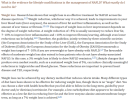At last I am about to visit an actual diabetic nurse in our GP group of practices. Due to other health issues I take medication one of which is a biologic to keep psoriasis at bay. I really do not wish to take any more medication and would prefer to reverse the type 2 diabetes by diet and exercise.
My questions are;
a) is it possible
b) is there any support or trials that I can join.
Many thanks,
Patsy Ann
My questions are;
a) is it possible
b) is there any support or trials that I can join.
Many thanks,
Patsy Ann

